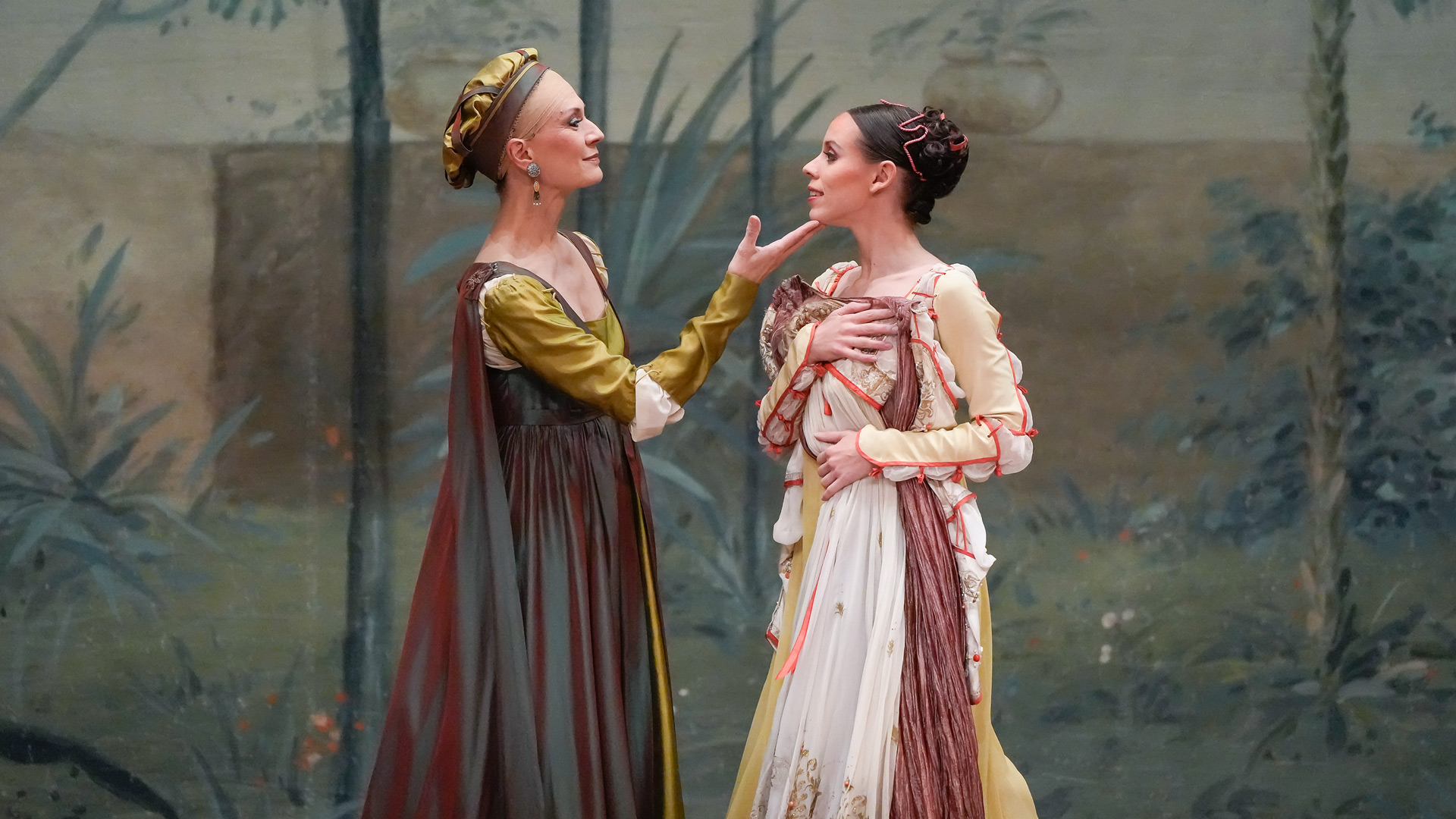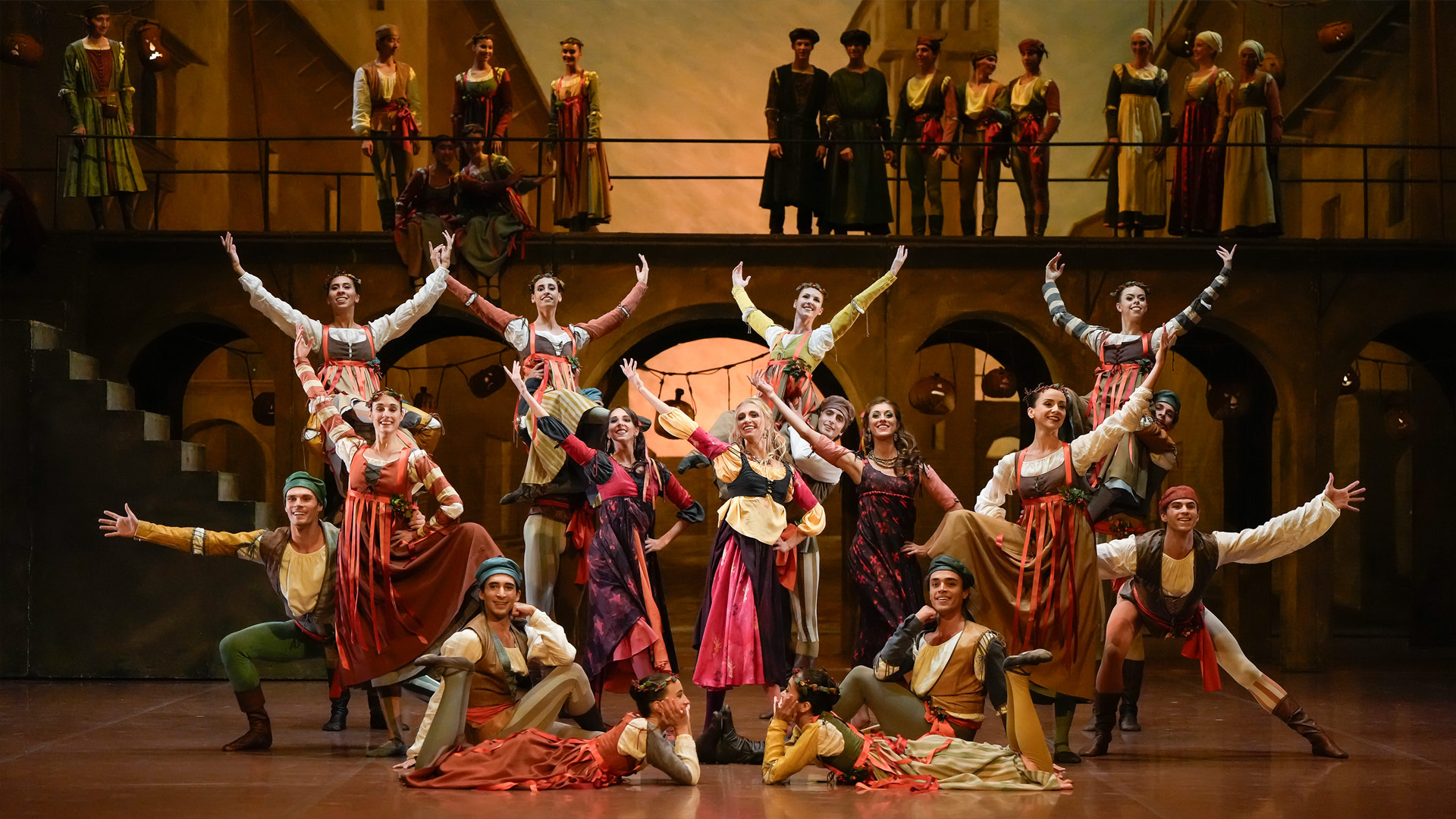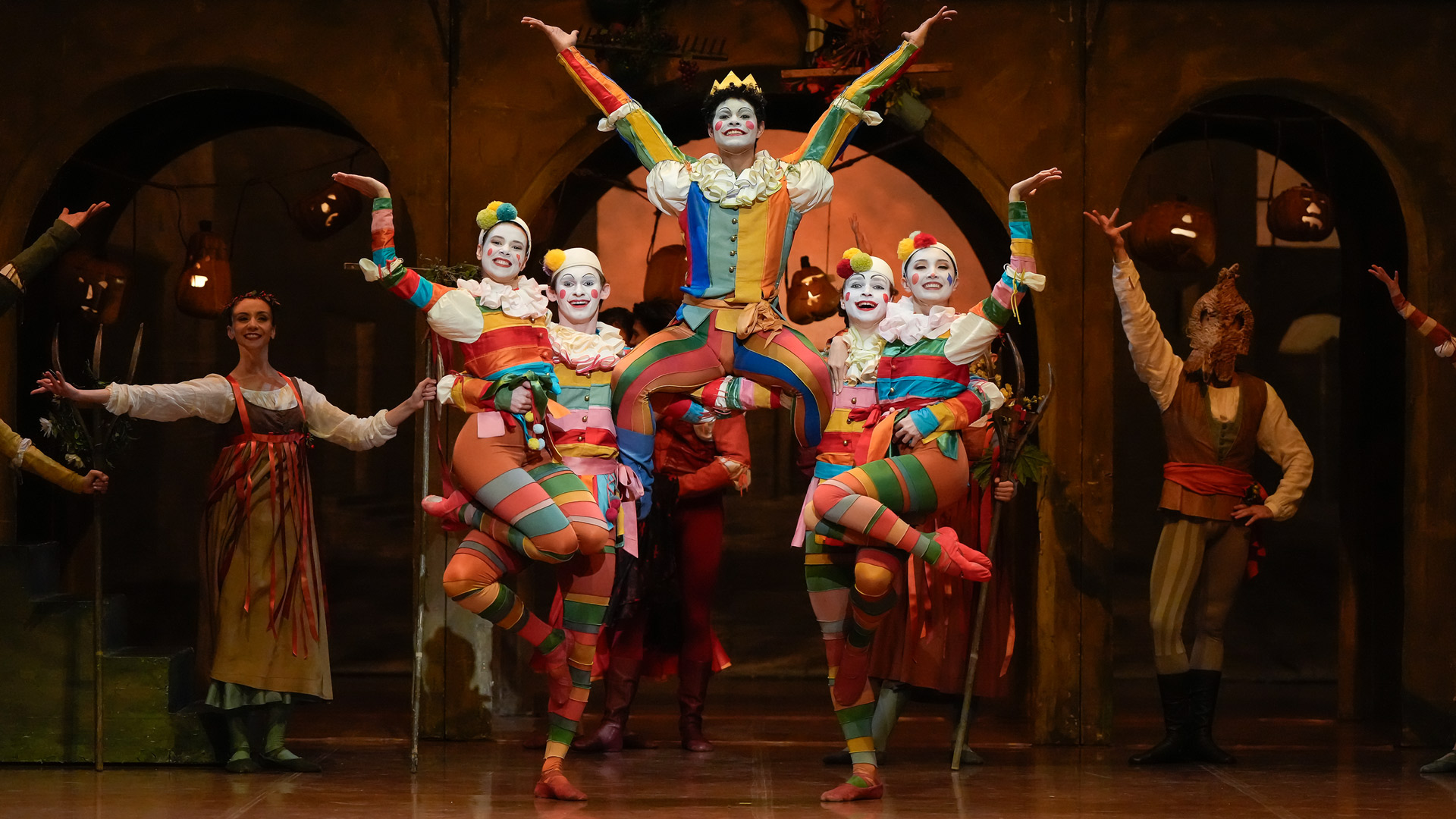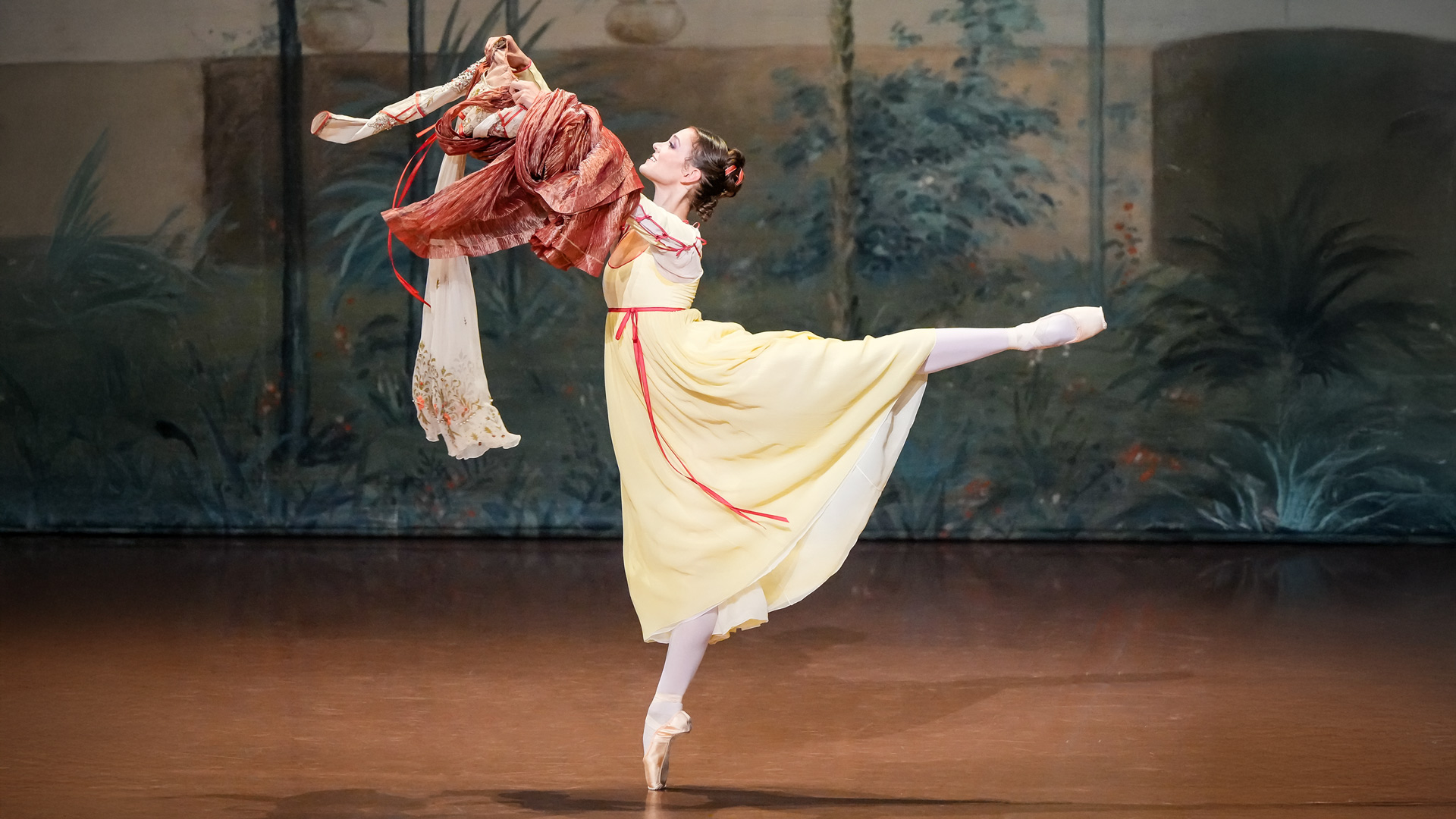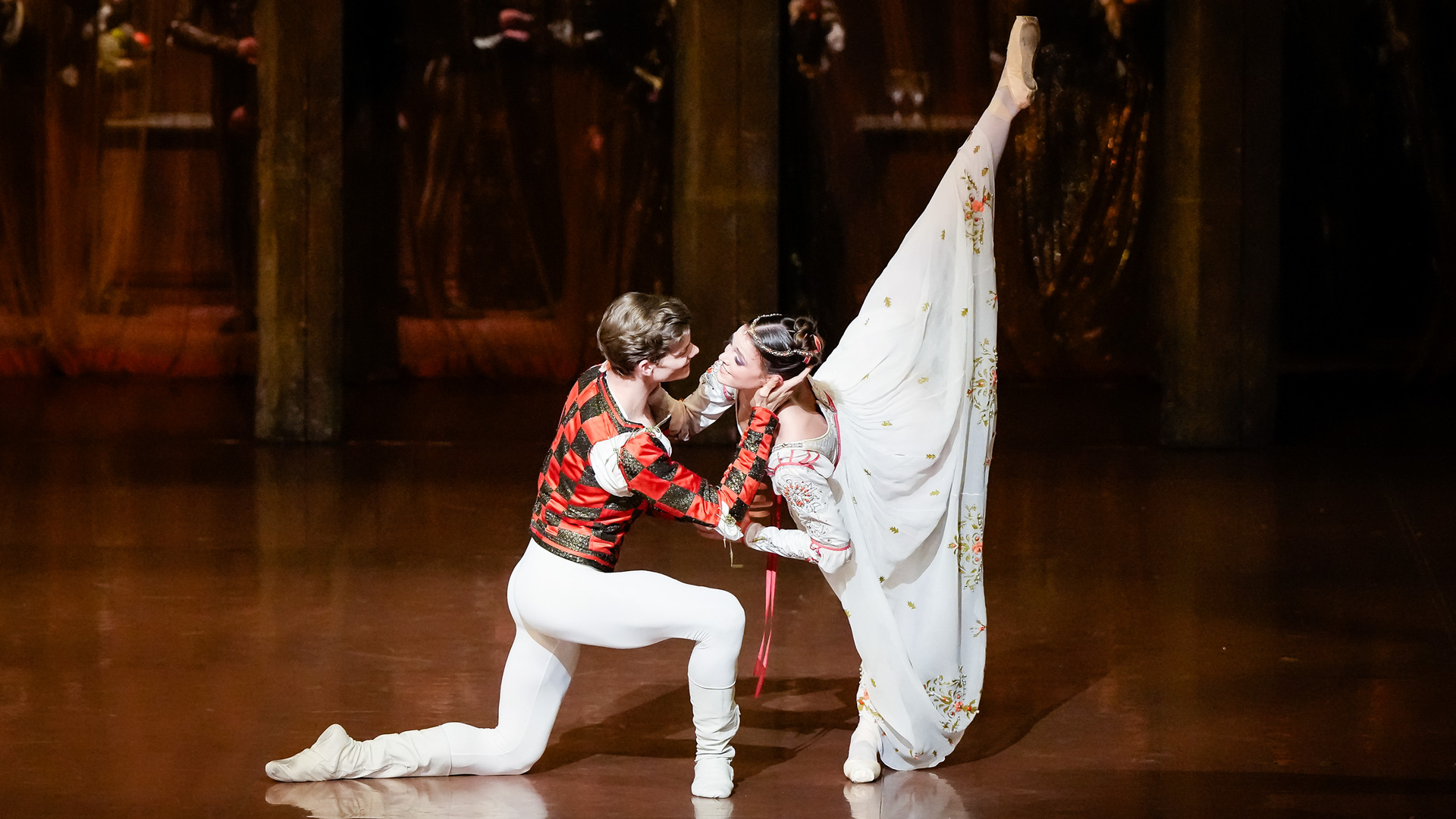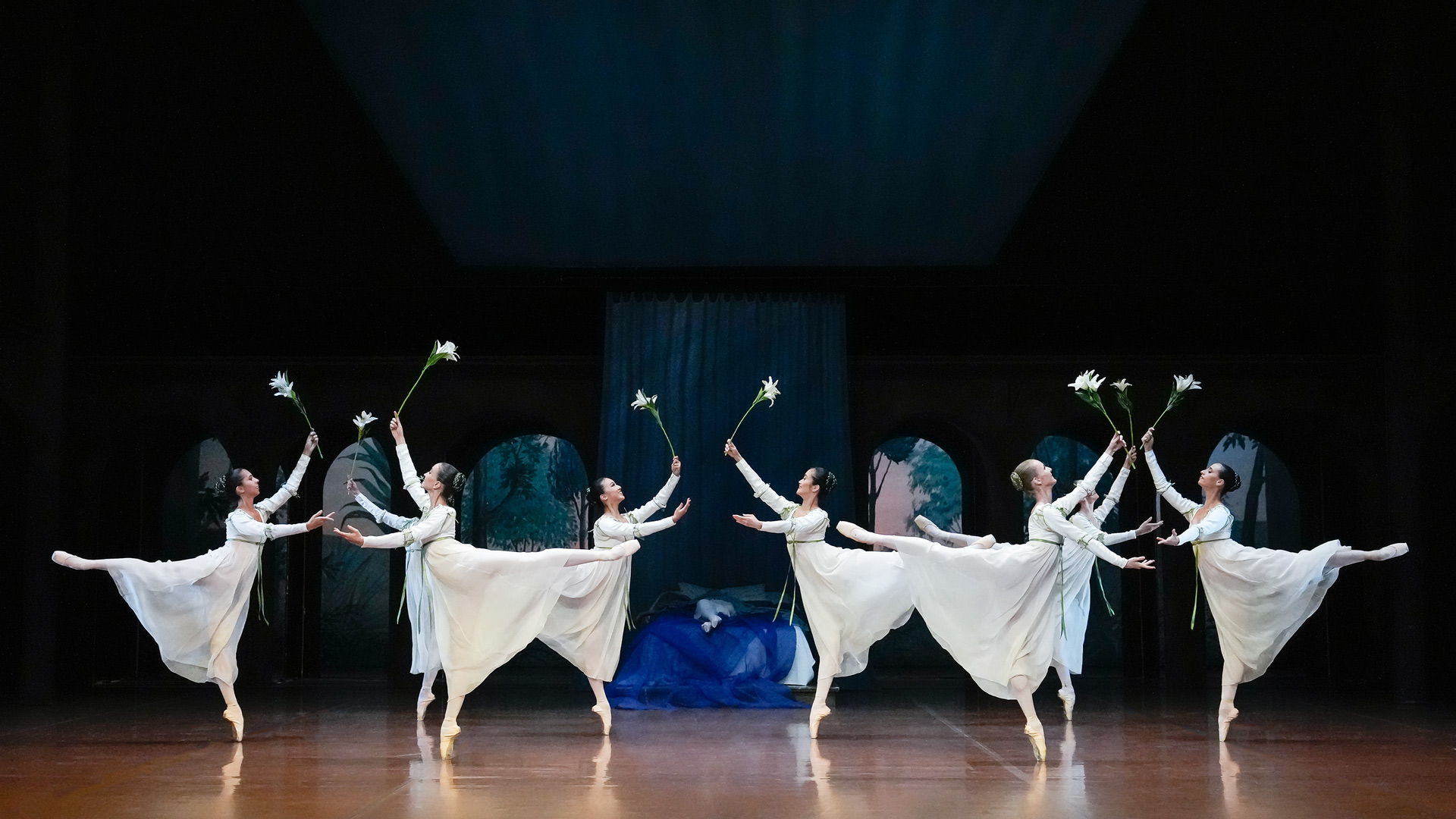
ROMEO E GIULIETTA
by John Cranko from William Shakespeare
Choreography and staging: John Cranko
Music: Sergej Prokof’ev
Set design and costumes: Jürgen Rose
World premiere: 2 December 1962
Stuttgart Ballet
It is love at first sight and, at the same time, a love that cannot be. Together for just one night, the lovers – probably the most famous of all time – are separated forever by the mutual hatred of their families.
William Shakespeare’s tragedy about the feud between the Montagues and Capulets, whose children find each other and overcome their deep hatred, has inspired countless artists. John Cranko also revisited this timeless story in 1962, creating one of his most popular ballets. With poignant pas de deux, fiery sword fights, sumptuous dances and lively carnival scenes, Cranko brings the turmoil of Verona to life. He portrays his dreamy Romeo, his impetuous Juliet, the reckless and buffoonish Mercutio and the cold and sparkling villain Tybalt so clearly that the audience is drawn deeply into the breathtaking current of events from the very first moment. From the dizzy heights of newfound love, he plunges with the protagonists into unstoppable and senseless violence, ending in tragic death.
Sergei Prokofiev’s descriptive music, combined with Jürgen Rose’s lavish sets and costumes, provides the perfect backdrop for the scenes to unfold as if they had stepped straight out of an Italian Renaissance painting.
’It is a great pleasure for me to be a guest in Nervi in July with Romeo and Juliet. by John Cranko. It is a very special moment for me and for the company, as we have not performed in this beautiful city since 1986, when I was still dancing. Cranko’s Romeo and Juliet is a timeless masterpiece that powerfully tells the story of the passionate and tragic love between the two protagonists. I am thrilled to be able to present this moving story in the unique setting of Nervi.’ (Tamas Detrich)
THE STUTTGART BALLET
The Stuttgart Ballet has been dancing at the top of the world for over 50 years. With more than 70 dancers from over 20 countries and invitations to perform all over the world, it is impossible to imagine the international ballet scene without the company. Its extensive repertoire delights both lovers of classical ballet and fans of contemporary dance. The number of world premieres and renowned choreographers who have created new pieces in Stuttgart is unrivalled anywhere in the world. The company’s versatile dancers are sought-after guests on the world’s most important stages.
Ballet in Stuttgart has a rich history dating back to the 18th century. A new era began in 1961 with the appointment of choreographer John Cranko as ballet director. With three legendary new creations – Romeo and Juliet, Onegin and The Taming of the Shrew – Cranko became a brilliant innovator of the narrative ballet genre. In addition to his own creations, Cranko also made room in the programme for works by other artists, especially his dancers, whom he encouraged to choreograph their own pieces. All subsequent directors of the company have followed John Cranko’s lead and focused on new creative impulses. Tamas Detrich has been Artistic Director of the Stuttgart Ballet since 2018. To date, he has commissioned over 35 world premieres and led the company on international tours to Japan, China and the Netherlands.
JOHN CRANKO (1927-1973)
John Cranko was born on 15 August 1927 in Rustenburg, South Africa. He trained as a dancer mainly at the University of Cape Town, where in 1942 he also choreographed his first ballet to Stravinsky’s Suite from L’histoire du soldat. In 1946, he continued his studies at the Sadler’s Wells School in London and shortly afterwards became a member of the Sadler’s Wells Ballet, later the Royal Ballet. In 1947, Cranko created a sensational choreography for the Sadler’s Wells Ballet to Debussy’s Children’s Corner. From 1949 onwards, he pursued a career exclusively as a choreographer, with highly successful pieces, mostly for the Sadler’s Wells Ballet. In 1955, he choreographed La bella Elena for the Paris Opera. His first English ballet for the Royal Ballet, The Prince of the Pagoda, premiered in 1957. In 1961, John Cranko was appointed Director of the Stuttgart Ballet and began a period of great splendour for the company. At first, Cranko created small choreographies and gathered a group of dancers around him, including Márcia Haydée, Egon Madsen, Richard Cragun, Birgit Keil and Susanne Hanke. The turning point towards world fame for Cranko and the entire company came in December 1962 with the premiere of Romeo and Juliet. Acclaimed by critics and audiences alike, this production marked the beginning of the great era of the Stuttgart Ballet. With his growing fame, Cranko began to take the Stuttgart Ballet on tour around the world, with stops in the United States, Israel, Paris and the Soviet Union, which ensured worldwide fame for the young company and the “miracle of the Stuttgart ballet”. On 26 June 1973, John Cranko died unexpectedly during a flight back from a successful tour of the United States.
